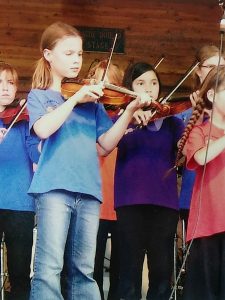My fingers run up and down
the keys like waves
My eyes follow whole notes placed up and down
the staff
rising and falling
like large powerful swells in the ocean
As my confidence builds, I move
on to quarter notes
rising
and falling short
and lapping
Arpeggios make me feel like a little girl
jumping rope
quick and light
on my feet
We’ve been doing poetry in my Literature course and I decided to write my poem homework about the piano. We have been integrating so many art mediums in my education program!
Having seven octaves of choice has surprised me of how simply jumping a note down can change it’s entire personality. I think back to growing up in Smither’s Buckley Valley Youth Fiddlers, and hearing the cellos behind the fiddlers pulling deep and woody sounds. I loved how the low notes made me feel and wished that I could draw out those same octaves on my own fiddle. Now, I have so many choices on the piano!

I am really enjoying the concept of sheet music. It is reliable and mathematical. If I question what I play, I know that the answer can be found with another quick glance at the measure. This is different than learning by ear because any concerns I have while playing by ear must be reconciled by listening again, and self-determining with no defining answer.
The piece that I had begun to work at is the classic 4 chord song. I had already learned the song by ear, and thought that it would be a good way to scaffold my way to both reading and playing a piece of sheet music simultaneously. I thought that I was ready to accomplish playing the full song while keeping time because:
- I could identify notes by using this app and this app as well.
- I could keep time consistently.
- I could translate the notes and chords onto the piano
Despite how ready I thought I was, I did NOT reach my own expectations. Why you ask? My ear had already leaned the song previously, and didn’t allow me to read the piece “by scratch”. My fingers floated to the keys, before my eyes grasped the notes on the paper. In an attempt to “turn off” my ear, I started wearing earplugs to dislocate the music and force me to read. In doing this, I have been reading music fluidly. The notes are being read, and scripted through my fingers pressing the keys as I tackle:
- Scales and arpeggios in the key of D, G, A, and C
- Understanding the context of time interval in music
- Understanding which notes change in each key signature
I have been thinking about my midterm piece as well, and have settled with Gigue by Samuel Arnold for its challenging triplets and upbeat time interval. Furthermore, Gigue is beneficial as it holds many scales and arpeggios, which are newly familiar to me. I believe that I will be able to play the music start to finish without stopping, keeping the correct tempo, notes, and fingering. Hopefully in the next blog we can witness this happen, in the form of a video!
All for now,
Lauren
